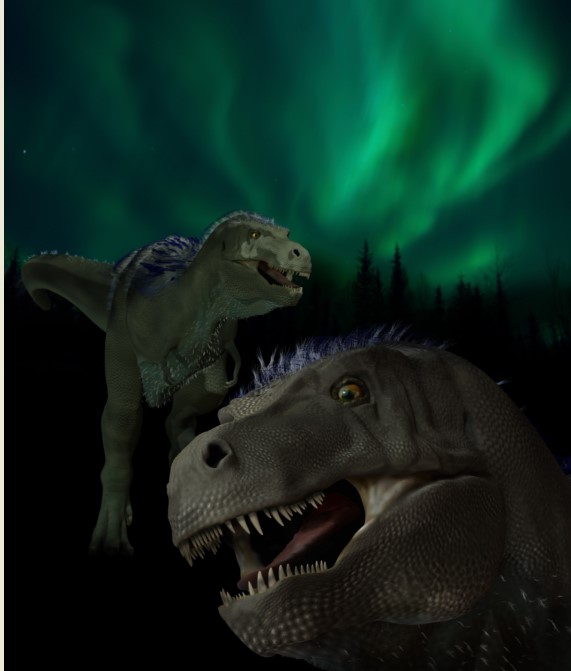Mini Arctic T. Rex Relative Discovered

A miniature cousin of Tyrannosaurus rex once roamed the Arctic, a new fossil discovery reveals.
The new tyrannosaur (Nanuqsaurus hoglundi) had a skull length of between 23 and 27 inches (60 to 70 centimeters) when full-grown. In comparison, an adult T. rex boasted a skull about 60 inches (150 cm) long — that's a whopping 5 feet (1.5 meters).
"The 'pygmy tyrannosaur' alone is really cool because it tells us something about what the environment was like in the ancient Arctic," study researcher Anthony Fiorillo of the Perot Museum of Nature and Science in Dallas, said. "But what makes this discovery even more exciting is that Nanuqsaurus hoglundi also tells us about the biological richness of the ancient polar world during a time when the Earth was very warm compared to today."
Teeny tyrannosaur
The identification of the new species comes from a few skull bone fragments found in 2006 on Alaska's North Slope, at the Kikak-Tegoseak Quarry inland from Prudhoe Bay. Originally, paleontologists thought the bones belonged to another tyrannosaurid dinosaur, Gorgosaurus libratus. But further research showed the fossil to be about 70 million years old, which matched better with the timing and range of a close relative of Gorgosaurus, Albertosaurus sarcophagus.
On closer inspection, the skull fragments didn't match the Albertosaurus, either. In fact, the bones appear to fill evolutionary and geographical gaps between other tyrannosaur species, the researchers reported March 12 in the journal PLOS ONE.
The first word of the scientific name given to the new species means "polar bear lizard," and the second is in honor of earth scientist Forrest Hoglund. The fossil discovery came from northern Alaska, perhaps highlighting the adaptability of this toothy predator. [In Photos: A Near-Complete T. Rex Skeleton ]
Sign up for the Live Science daily newsletter now
Get the world’s most fascinating discoveries delivered straight to your inbox.
Ancient arctic
The habitat of N. hoglundi would have been warmer than today's Arctic Circle, but still seasonally extreme. As still occurs today, winter would have plunged the region into round-the-clock darkness, limiting the growth of plants. The small size of the new tyrannosaur might be an adaption to the environment, the researchers wrote. This sort of body change would not be unprecedented: The three-toed predator Troodon grew 50 percent larger in what is now Alaska than individuals found in Montana and southern Canada, they wrote. It seems the boost in body size may have come courtesy Troodon's big eyes, which gave it an advantage at catching prey during dark Alaskan winters.
In the case of the smaller-than-usual N. hoglundi, the body shrinkage could be a result of limited resources, the researchers suggested. Fewer plants would have meant fewer animals to prey on, so the apex predator of the ecosystem could not grow very large.
The small tyrannosaur is not the first dinosaur found in the Arctic. In 2013, researchers found the skull of a Triceratops-like plant-eater on the North Slope, and thousands of dinosaur tracks line a site along the Yukon River nearly in the Arctic Circle. Dinosaurs have also been found in Antarctica.
Follow Stephanie Pappas on Twitter and Google+. Follow us @livescience, Facebook & Google+. Original article on Live Science.

Stephanie Pappas is a contributing writer for Live Science, covering topics ranging from geoscience to archaeology to the human brain and behavior. She was previously a senior writer for Live Science but is now a freelancer based in Denver, Colorado, and regularly contributes to Scientific American and The Monitor, the monthly magazine of the American Psychological Association. Stephanie received a bachelor's degree in psychology from the University of South Carolina and a graduate certificate in science communication from the University of California, Santa Cruz.









